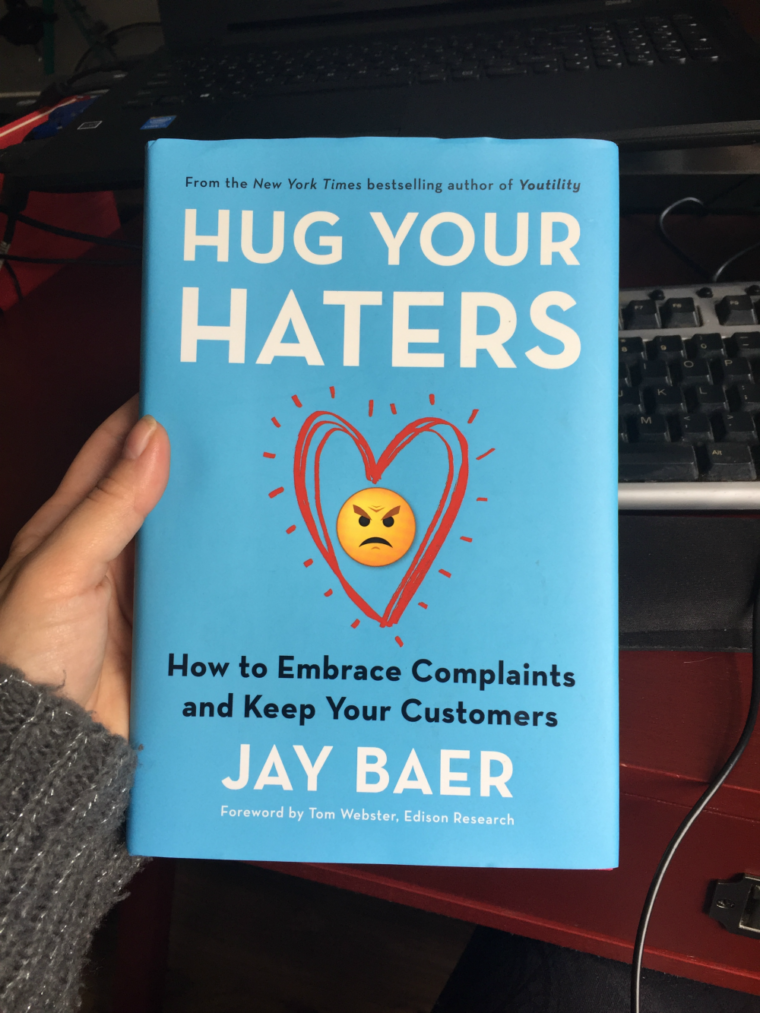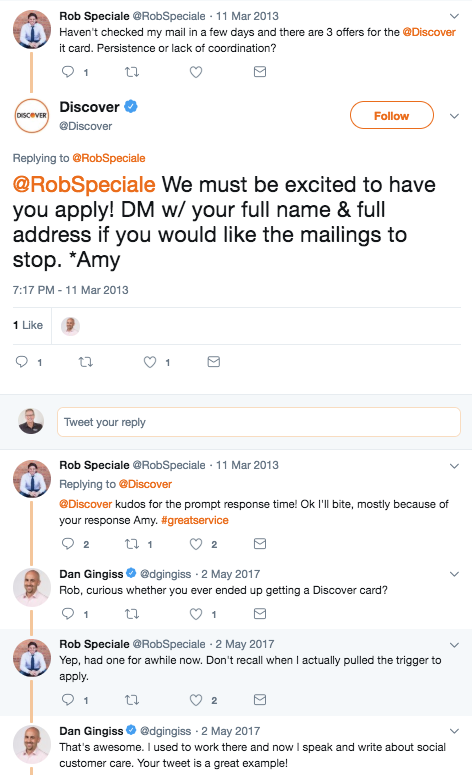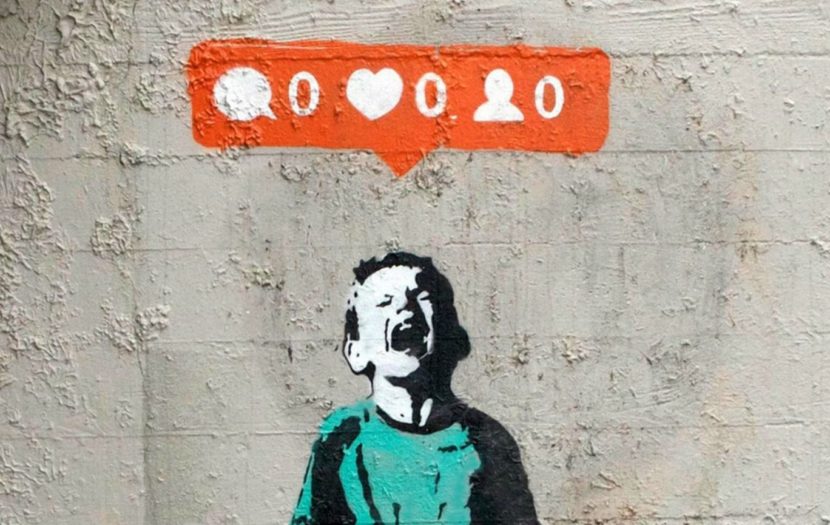I love my mom. But when she tells me I’m the smartest, most talented person in the world, I realize she might be a bit biased.
I appreciate a regular dose of motherly love as much as the next person, but it’s important to recognize that not everyone shares your mother’s undying affection. The first time a bully made fun of you on the playground, your natural reaction was probably to fight back and reject such an unfounded accusation. A simple “I know you are, but what am I?” probably sufficed.
When confronted with criticism, our instincts take over. We either pick a fight or ignore the hater altogether as a defense mechanism.
This same tendency pushes numerous business owners to ignore customer complaints. The gripes cut too deep, so we put our fingers in our ears and try to drown them out. Each complaint feels like a personal affront to our business sensibilities, and cynicism begins to set in—it starts as a dismissive attitude about grievances but can easily morph into a distrust of the entire customer service process.
Judith and Richard Glaser, founders of the Creating WE Institute, argue that there’s a neurochemistry to conversations. The Glasers report that our bodies produce more cortisol any time we encounter fear, rejection or criticism. That rush of cortisol “shuts down the thinking center of our brains and activates conflict aversion and protection behaviors.”
 Suddenly, a complaint becomes a defining judgment that informs every interaction moving forward. We remember the negative things people say, and we become more guarded when similar situations present themselves.
Suddenly, a complaint becomes a defining judgment that informs every interaction moving forward. We remember the negative things people say, and we become more guarded when similar situations present themselves.
The longer you dwell on that negative moment, the more it affects your conduct.
Even when businesses don’t feel personally attacked, a response to consumer feedback isn’t guaranteed. Some companies are dismissive, chalking up criticism as one random yokel’s opinion. Others think a response is an admission of guilt, potentially opening the floodgates for more discontent.
Whatever the reason, your silence speaks volumes.
When customers complain, you MUST respond, every time. This is a big lesson in my book, Hug Your Haters: How to Embrace Complaints and Keep Your Customers.
No response is a response
If you think not responding isn’t a response, think again. These antics rarely work on the schoolyard, and they certainly won’t be effective in the business world. Ignoring your customers only tells them that you don’t care.
Whether it’s criticism or praise, consumers increasingly use social channels to interact with brands. About 40 percent of complaints happen in public—on social media, review sites and forums. One could argue that customer service has become a spectator sport.
Onlookers wait to see how you react, and your response tells them whether they can trust your brand. Staying silent makes a bad situation worse, although that doesn’t stop one-third of all complaints from going unanswered. It can also take a heavy toll on customer advocacy—the Net Promoter Score of customers who don’t receive a reply to social media comments drops by 43 percent.
See complaints for what they are: opportunities to interact with customers. Even if someone is upset right now, that agitation easily goes away once you’ve addressed and resolved the issue. After all, it’s a lot cheaper to keep existing customers than it is to find new ones.
Find the silver lining.
It might be tempting to stay silent, but you miss a tremendous opportunity to improve your organization by listening to complaints. If you don’t believe me, consider the following advantages a single response can provide:
Recover and retain unhappy customers.
Many companies don’t respond to social media complaints at all. If they do, it’s far from timely. Customers are well aware of this shortcoming, and only 42 percent of people who complain on social channels expect a reply.
This presents an incredible opportunity to exceed expectations. Imagine how many minds you could blow—and hearts you could win—with a response. Even if you can’t solve a problem on the spot, the simple act of replying to a customer on social media increases customer advocacy by 20 percent.

Enhance brand affinity.
Responding to a complaint on social channels provides an opportunity to create an expression of public support. Anything you create is out there for everyone to see.
Consider Discover Financial Services, for example. Back in 2013, the company engaged in a Twitter exchange with a customer who was annoyed by the number of credit-card offers he’d received in the mail.
@RobSpeciale shot off a tweet: “Haven’t checked my mail in a few days, and there are 3 offers for the @Discover card. Persistence, or lack of coordination?”
Within nine minutes, he received a brilliant response: “@RobSpeciale We must be excited to have you apply! DM w/ your full name & full address if you would like the mailings to stop. *Amy”
Four minutes later, Discover heard back from Speciale: “@Discover kudos for the prompt response time! Ok, I’ll bite, mostly because of your response Amy. #Greatservice”
It took Discover only 13 minutes to turn a hater into a new customer.
Glean invaluable business insights.
Compliments are overrated. They might do wonders for the ego, but when was the last time you gathered fruitful information from adoration?
Criticism is far more useful—it’s the petri dish for operational improvement. Unless customers take the time to complain, you won’t know what you’re doing wrong.
Erin Pepper, former head of marketing and guest relations for Le Pain Quotidien, a 200-location cafe and bakery chain, understands the importance of complaints. Pepper wanted to triple the volume of customer complaints because she saw how criticism provides insights into how companies can improve.
The Le Pain Quotidien team built feedback nudges throughout the customer experience, aggressively seeking customer input via the company’s website, emails and signs in the restaurants. Customers responded in kind, giving the team a mountain of complaints to analyze.
Once the bakery chain incorporated the feedback and improved its customer service, the number of complaints rolling in slowed dramatically. To get fewer complaints, you first must get more complaints.
Differentiate your business from competitors: Competing in price or product is a no-win game. Someone will inevitably enter the market with better or cheaper offerings. Customer experience is the last remaining differentiator, and you can really stand out with how you handle complaints.
This past summer, U.K.-based travel application Skyscanner ran into a technical hiccup in how it reported layovers, inadvertently adding decades to how long travelers would need to wait for a connecting flight.
One user took to Skyscanner’s Facebook page to make the company aware of the snafu, asking the company what he should do during the 47-year layover it suggested. Within minutes, Skyscanner offered a witty response that included humorous suggestions of ways the user could spend several decades waiting for his flight—along with a thanks for the heads up.
People lauded Skyscanner for its response, claiming that the company “won the internet” that day. It’s all about having an impact on consumers and showing that you hear their concerns.
It’s easy to feel attacked when customers complain on social channels. Develop a thick skin and use the opportunity to show haters how quickly you want to resolve their problems. In addition to letting current customers know you care about their concerns, it will give potential clients another reason to consider doing business with your company.
Learn more about the importance of customer experiences in the seventh issue of the Business of Story magazine.
Listen to Jay Baer on episode #0: Why Story, Why Now?








at 8:45 pm
[…] 12. The Benefits of Handling Customer Complaints […]